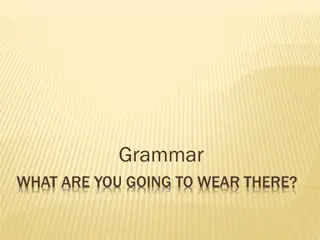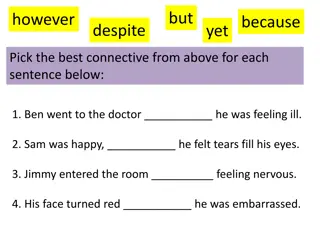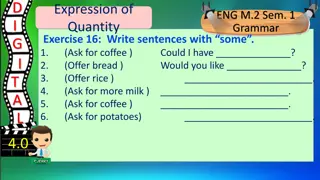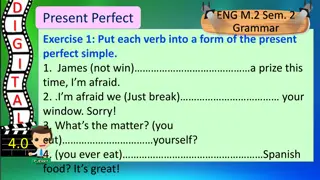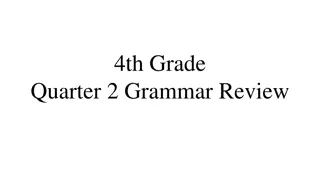
Understanding Weak Decays with Feynman Diagrams
Explore the world of weak decays in particle physics through the use of Feynman diagrams. Learn about the quarks involved, their transformations, and the creation of mesons and baryons. Dive into the intricate details of particles and their interactions within the realm of quantum mechanics.
Download Presentation

Please find below an Image/Link to download the presentation.
The content on the website is provided AS IS for your information and personal use only. It may not be sold, licensed, or shared on other websites without obtaining consent from the author. If you encounter any issues during the download, it is possible that the publisher has removed the file from their server.
You are allowed to download the files provided on this website for personal or commercial use, subject to the condition that they are used lawfully. All files are the property of their respective owners.
The content on the website is provided AS IS for your information and personal use only. It may not be sold, licensed, or shared on other websites without obtaining consent from the author.
E N D
Presentation Transcript
Example Draw a Feynman diagram for the weak decay D+ ??+ ?+ (? ?) A) Identify the quarks (from tables) needed in the initial state: ?+ (? ?) ? (? ?) B) Identify the quarks (from tables) needed in final state: C) There is a ?in both the initial and final state, so, good chance it s just a spectator quark in the decay D) The charm quark does not appear in the final state, so it MUST have decayed! Have the c-quark decay by emitting a W boson, and then the W boson decaying into a quark + antiquark. ? I need to get an s quark in the final state, so let me try c sW+ (Must be a W+ by charge conservation) I have ?, ? in final state, just need to get an ? and ? ! Can W+ ?? ? ? ?+ ? ? We have all the quarks we need, but we need the ? from W+ to combine with the ? from charm decay. And ? quark to combine with ?. How can we do that? ? ?
Example Draw a Feynman diagram for the weak decay D+ ??+ ?+ (? ?) A) Identify the quarks (from tables) needed in the initial state: ?+ (? ?) ? (? ?) B) Identify the quarks (from tables) needed in final state: C) There is a ?in both the initial and final state, so, good chance it s just a spectator quark in the decay D) The charm quark does not appear in the final state, so it MUST have decayed! Have the c-quark decay by emitting a W boson, and then the W boson decaying into a quark + antiquark. Draw it as an internal W diagram! ? ? ? ?+ ? ?+ ? ? ? ? ?
Exercises with Feynman diagrams, Weak decays Using the Table on the next page to draw the following Feynman diagrams Draw a Feynman diagram for the weak decay B ?0? . Draw a Feynman diagram for the weak decay ?0 ?+? . Draw a Feynman diagram for the weak decay ??+ ??+. Draw a Feynman diagram for the weak decay ?+ ?+?0. Draw a Feynman diagram for the weak decay ?0 ? ?+. Draw a Feynman diagram for the weak decay ? ? ? . Draw a Feynman diagram for the weak decay ? 0 ? + ? .
Quarks Some Mesons Some Baryons Particle Charge Particle Quarks Particle ?+ ? ?0 ?+ ? Quarks Particle ?+ ? ?0 ?0 ??0 ??0 ? Quarks ( ??) ? 1/3 (? ?) ? ??? ? +2/3 ( ??) (? ?) ( ??) ? 0 + ++ ??? ? 1/3 ? ? ,?? (? ?) ??? ? +2/3 (? ?) (? ?) ( ??) ??? ? 1/3 ( ??) ??? 0 ? +2/3 (? ?) or ( ??) ?? ?+ ? ?0 ?0 ??+ ?? (? ?) ??? (? ?) (? ?) ??? Antiquarks have opposite charge to the quarks + ( ??) ? / ? (? ?) (? ?) ? ??? (? ?) 0 ??? ? ( ??) (? ?) ( ??)






